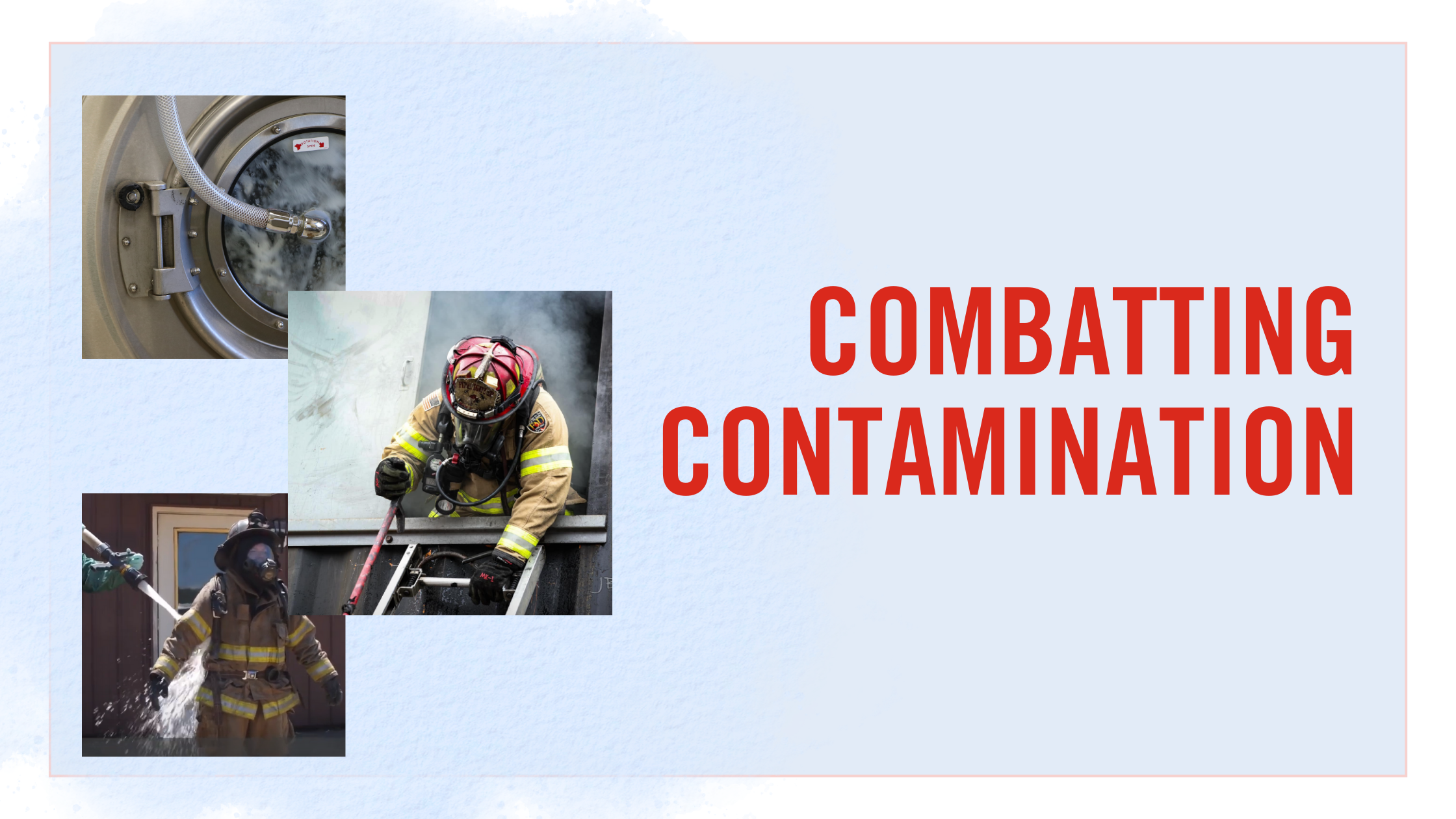This article first appeared in International Fire and Safety Journal.
Nick Magoteaux, Business Development & Military Contract Manager for Gear Wash, talks to IFSJ Editor Iain Hoey about firefighter PPE decontamination.
Can you explain the importance of properly maintaining and preserving PPE gear?
The longevity of your turnout gear and its effectiveness rely heavily on proper maintenance. Firefighters must handle dangerous materials and their gear can pick up all types of toxins and harmful contaminants. Keeping up with maintenance can help you by reducing your risk of being exposed—or exposing others—to carcinogens, and by extending the usable life of these valuable garments.
It’s becoming true that the “salty” image of a firefighter covered in soot is no longer recognized as a badge of honor. Rather, it’s a serious health risk as accumulated substances can have serious negative effects on your gear’s capabilities. They can reduce its ability to reflect water or radiant heat; cause it to be more
susceptible to tears or punctures; its reflective trim can become less visible; and oils and greases from smoke can cause it to ignite.
Keep in mind that changes to NFPA 1851 now require annual gear inspection and twice yearly cleanings at a minimum. Departments need to educate their staff about proper care and maintenance, so take time to review your policies and identify areas for improvement.
What are the common do’s and don’ts when it comes to keeping PPE gear in good condition?
Do take time to understand the manufacturer’s specific guidelines for cleaning and inspection as not all procedures are identical depending on the type of garment and its materials of construction. Also conduct a thorough visual inspection before and after each use, looking for signs of damage or wear like loose stitching, tears, punctures or other structural issues. Gear should be cleaned regularly using NFPA 1851 compliant detergents and methods that are compatible with the materials used in the gear—a verified PPE care and maintenance provider like Gear Wash will have the specialized laundering equipment and expertise to help you. And be sure to store your gear in a clean, dry, well-ventilated area that avoids exposure to direct sunlight and extreme high or low temperatures.
Never ignore signs of damage no matter how minor they may seem. Even small tears or cracks can compromise the gear’s effectiveness and increase the risk of injury. Promptly address any damage by repairing or replacing the affected garments or components. And when cleaning firefighting gear, only use NFPA-compliant detergents and solutions—never use noncompliant chemicals, bleaches or abrasive materials that can compromise its protective properties.
Critically, do not neglect a regular maintenance schedule for inspections, cleaning and repairs as required per NFPA standards.
Could you elaborate on the advantages of using a professional cleaning service for PPE gear?
Verified PPE care and maintenance providers like Gear Wash possess in-depth knowledge and expertise in handling and cleaning various types of PPE. They understand the unique requirements and materials used in firefighting, so the cleaning process is thorough, effective and fully compliant with industry standards. They are also well versed in following manufacturer guidelines, so the gear is cleaned in a manner that best maintains its protective properties and extends its life span. These services also use specialised cleaning equipment, agents and techniques specifically designed for bunker gear that more effectively remove dirt and contaminants than departments typically can on their own. Plus, verified ISPs often will perform complete inspections of the gear before and after cleaning, so you can trust a trained professional who does the work every day to identify signs of damage.
Professional services further provide fire departments with a documented overview of the gear’s maintenance, which aids in compliance, audits and budget planning. And because maintaining gear can be very time-consuming, outsourcing these tasks to the experts can create long-term savings that help to offset the associated costs of these services.
How often should gear be cleaned and what does the cleaning process typically involve?
The 2020 NFPA 1851 standard increased its recommendation for advanced cleanings to twice a year and emphasises the fire department’s responsibility to document all cleanings and to train personnel in protective garment care procedures. Additionally, it specifies that cleaning processes used by ISPs be verified annually by independent laboratories for their effectiveness in cleansing garments.
One method of cleaning is advanced ozone cleaning which is a process of combining oxygen and electricity to achieve a powerful clean by leaving your gear free of heavy chemical residue and without
any damage to the fabric. There is also ultrasonic cleaning that is a gentle yet effective scrubbing method using high-intensity sound waves in a liquid, which enhances the removal of contaminants from deep within the crevices of your structural helmets and other PPE.
Our Gear Wash facilities also use special technologies that supercharge our in-house laundry system through an advanced oxidation process. This goes above and beyond the NFPA 1851 process of cleaning verification, and with this technology, we can disinfect against some of the most common viruses such as SARS-CoV-2 and MRSA.
Are there any specific cleaning and maintenance techniques that should be used for different types of PPE gear, such as firefighting suits, helmets, gloves or boots?
Inspection and cleaning will vary for each type of gear, so it is difficult to account for all the techniques here. To help firefighters, Gear Wash has produced a series of educational videos that are free to watch and show you step-by-step how to maintain your gear, including testing gloves and boots for loss of water integrity.




